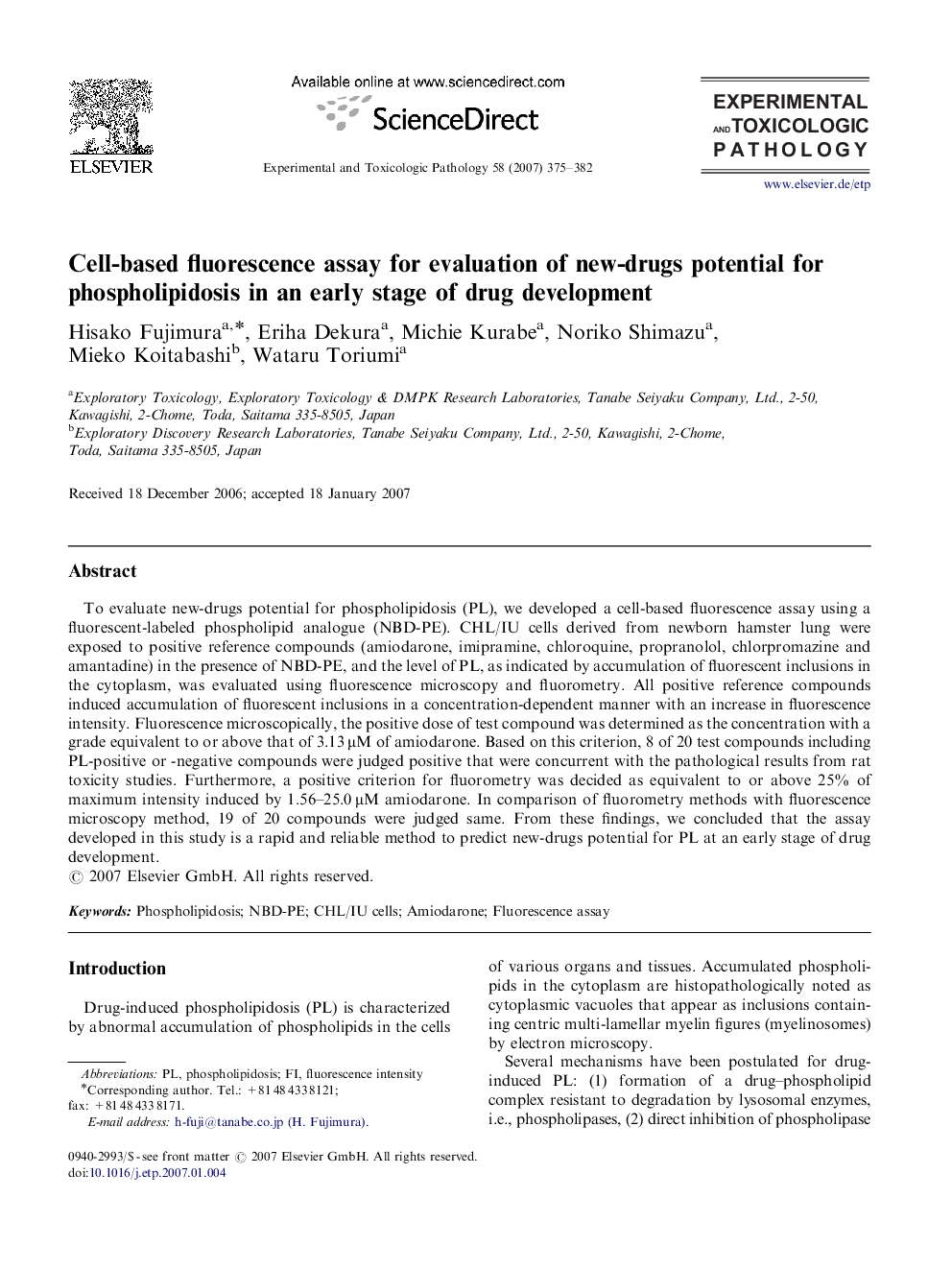| Article ID | Journal | Published Year | Pages | File Type |
|---|---|---|---|---|
| 2499433 | Experimental and Toxicologic Pathology | 2007 | 8 Pages |
To evaluate new-drugs potential for phospholipidosis (PL), we developed a cell-based fluorescence assay using a fluorescent-labeled phospholipid analogue (NBD-PE). CHL/IU cells derived from newborn hamster lung were exposed to positive reference compounds (amiodarone, imipramine, chloroquine, propranolol, chlorpromazine and amantadine) in the presence of NBD-PE, and the level of PL, as indicated by accumulation of fluorescent inclusions in the cytoplasm, was evaluated using fluorescence microscopy and fluorometry. All positive reference compounds induced accumulation of fluorescent inclusions in a concentration-dependent manner with an increase in fluorescence intensity. Fluorescence microscopically, the positive dose of test compound was determined as the concentration with a grade equivalent to or above that of 3.13 μM of amiodarone. Based on this criterion, 8 of 20 test compounds including PL-positive or -negative compounds were judged positive that were concurrent with the pathological results from rat toxicity studies. Furthermore, a positive criterion for fluorometry was decided as equivalent to or above 25% of maximum intensity induced by 1.56–25.0 μM amiodarone. In comparison of fluorometry methods with fluorescence microscopy method, 19 of 20 compounds were judged same. From these findings, we concluded that the assay developed in this study is a rapid and reliable method to predict new-drugs potential for PL at an early stage of drug development.
